
 |
|
#16
|
|||
|
|||
|
Quote:
We tend to look back on the 1920's and see it in terms of jazz and art deco, but Hawaiian and Spanish/Moorish/Mexican influences were quite strong, too. You can get a glimpse of that Spanish/Moorish impact on the culture of the period by looking at the Country Club Plaza in Kansas City, where I grew up: 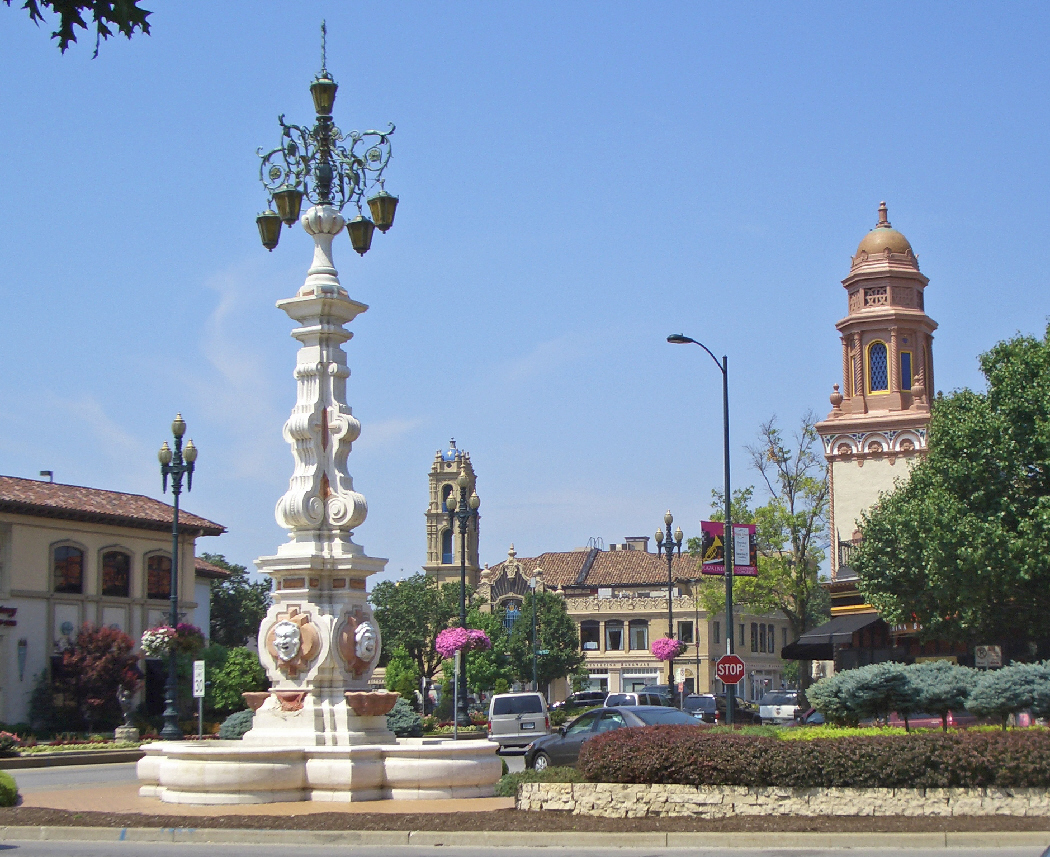 That was built beginning in the 1920's. But I digress. John continues: No, it was fairly inexpensive. My grandfather was stationed at Schofield Barracks in Oahu for a few years during the 1930's when my mother was a young teenager, and she told me that a lot of their household furniture there in the Officer's Quarters was made of koa. It got used for all sorts of purposes back then, not just ukeleles. Quote:
http://i.ebayimg.com/00/s/ODM3WDEyMD...Va5uX/$_57.JPG Up towards the top, there's some curl that's very characteristic of koa. Same thing here, looking at the wood in the lower bout: http://i.ebayimg.com/00/s/ODQ0WDEyMD...Va5up/$_57.JPG http://i.ebayimg.com/00/s/MTIwMFg3Nj...Va5ua/$_57.JPG If you look inside the soundhole here, you can see that the color of the wood in the body cavity is consistent with the color of the exterior. Nobody stains the inside of a guitar. One more thing that's kind of a side issue, but look at the neck here: It's not a square neck, and you can't really tell how thick the neck is because there's no photo taken at an acute angle that clearly shows the neck profile. But it looks pretty substantial. Many of the guitars intended for Hawaiian-style playing had thick V necks, like the Gibson Roy Smeck model. I've played a few original Smecks from the 30's, and they had massive V necks on them. You can play them as what folks back then called "Spanish guitars," but it helps to have long fingers. Anyway, looking closely at those pictures has convinced me that it is koa, and it was almost certainly Sears' top of the line Hawaiian guitar, intended for lap style playing with a steel, which is what they called those metal bars they used. Something like this:  Here's a picture I found of a really cool-looking vintage example:  That's described as "Vintage Brass Bar Nick Manoloff Slide Bar For Hawaiian Lap Steel Guitar." One more thing, if you look at the frets in this picture they appear to be original, but you'll see that they haven't received much if any playing wear: Now, that might just be an indication that it never got played much at all. The overall excellent condition of the guitar adds credence to that. But it could also mean that it came with a tall nut and was intended for playing with a steel. So I've come to the conclusion that this guitar was originally marketed as a "Hawaiian steel guitar," and that it was, in fact, made from koa. That would fit both the style and the era. Hope that makes sense. Wade Hampton Miller |
|
#17
|
|||
|
|||
|
You make an extremely convincing argument for koa, Mr. Miller! You noticed many details which I did not, and they do seem to "add up" to this being some sort of Hawaiian-type Parlor...
I still think that the wood inside looks like mahogany... but certainly, all things seem to lean towards the koa aspect...
__________________
"Home is where I hang my hat, but home is so much more than that. Home is where the ones and the things I hold dear are near... And I always find my way back home." "Home" (working title) J.S, Sherman |
|
#18
|
|||
|
|||
|
Quote:
Part of it is that I have owned some instruments made from very plain koa, plainer even than the wood on this guitar. Most of the time when you see koa it's got some figure to it, but on occasion it can be downright soporific from a visual standpoint. The other part of it that convinced me was the color of the wood inside the soundhole. I have seen century-old Cuban mahogany that had a much darker and richer color than the Honduran mahogany we see nowadays, but it wasn't the same color as the wood on this guitar, which does fall within the normal color range of koa. whm Last edited by Wade Hampton; 06-28-2015 at 10:29 PM. |
|
#19
|
|||
|
|||
|
After I wrote this:
Quote:
 So while this guitar we're discussing is not the same color as the Cuban mahogany I've seen in person, it seems clear that it is, in fact, not at all unlike some Cuban mahogany. So I amend what I wrote, and while I still believe the guitar in question is made of koa, it's also possible that it's Cuban mahogany. It's almost certainly not Honduran mahogany, though. whm |
|
#20
|
|||
|
|||
|
Can someone show me some pictures of a Koa guitar that looks like that, when I think of the woods I currently have the GS mini's on my mind. That being said, it looks to me like a stained spruce wood more than mahogany or Koa. https://www.taylorguitars.com/guitar...tegory_tid=209 For reference to what I am thinking of. Koa just has more exotic patterns than most woods. Even mahogany doesn't really match that guitar. That being said, I am not very familiar with vintage guitars and there could be some way of cutting the wood and splicing it together that could make a compelling case for it being Koa.
|
|
#21
|
|||
|
|||
|
I haven't owned either of the plain koa instruments I mentioned for more than 15 years now, so I have no photos. But I have seen koa that looks a lot like the wood in the mystery guitar.
Here's a picture of unfigured koa I found online: 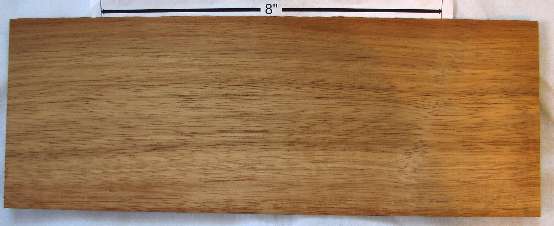 Here's another: 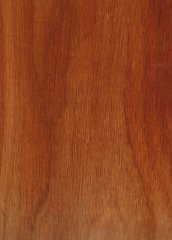 and another:  The slab of koa in that last photo is considerably prettier than the wood that was in either of the two koa instruments I mentioned. That wood looked more like this: 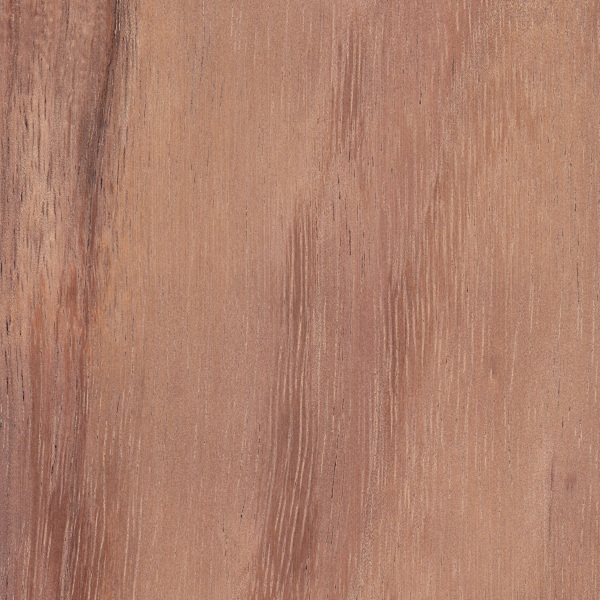 As you can see, koa can be very plain and visually uninteresting, and the color can vary considerably, too, from rich chocolate browns and golden browns to the sort of uninspiring muckledy dun color you see in that last photo. You can search this for yourself: just do a Google image search for "plain koa" and you'll pull up some of the images I used here. whm |
|
#22
|
|||
|
|||
|
Quote:
My father was born in 1922 and grew up in KCK, during the wide-open Pendergast era. In those days before the oil companies successfully eradicated street cars from American cities, a kid could go anywhere for a nickel or a dime, and saloons weren't too punctilious about verifying the age of a patron. Dad told me that in his late teens he saw not only Count Basie, but all of the legends of jazz. I suspect many a doctoral thesis could be written about the relationship (unwitting and unintended though it was) between the Pendergasts and the history of American music. I rode those street cars with my grandmother in 1950-51, but by the time of my next visit in 1959 they were all gone. </hijack> Quote:
Martin, AFAIK, never did make square-neck Hawai'ian (steel) guitars, though Gibson did. Martin's earliest Hawai'ian guitars permitted purchasers/players to hedge their bets; they were supplied with removable extension nuts (for playing with a steel) covering nuts of standard height for conventional fretting of conventionally raised frets. It was only later, possibly in the early '30s, that they were made as dedicated steel guitars with fixed tall nuts and frets flush with the fingerboard.
__________________
John Pictures of musical instruments are like sculptures of food. |
|
#23
|
|||
|
|||
|
Thanks for that link, John.
Here's some of the plainer koa shown on that page: 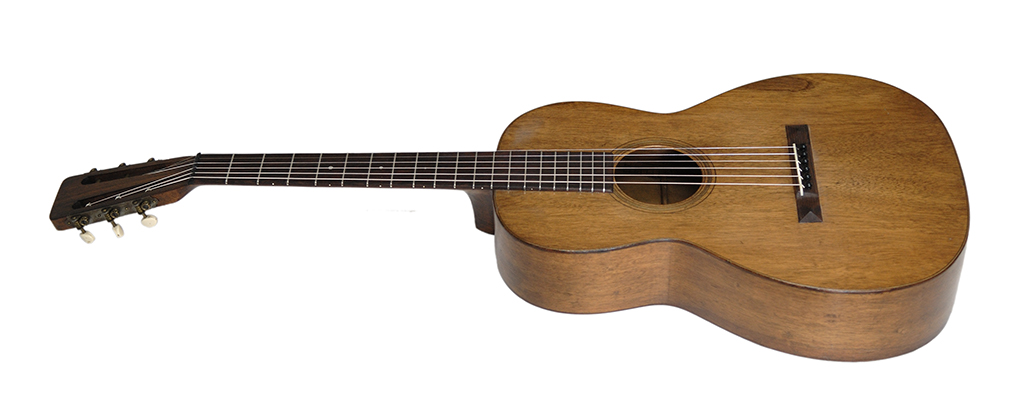   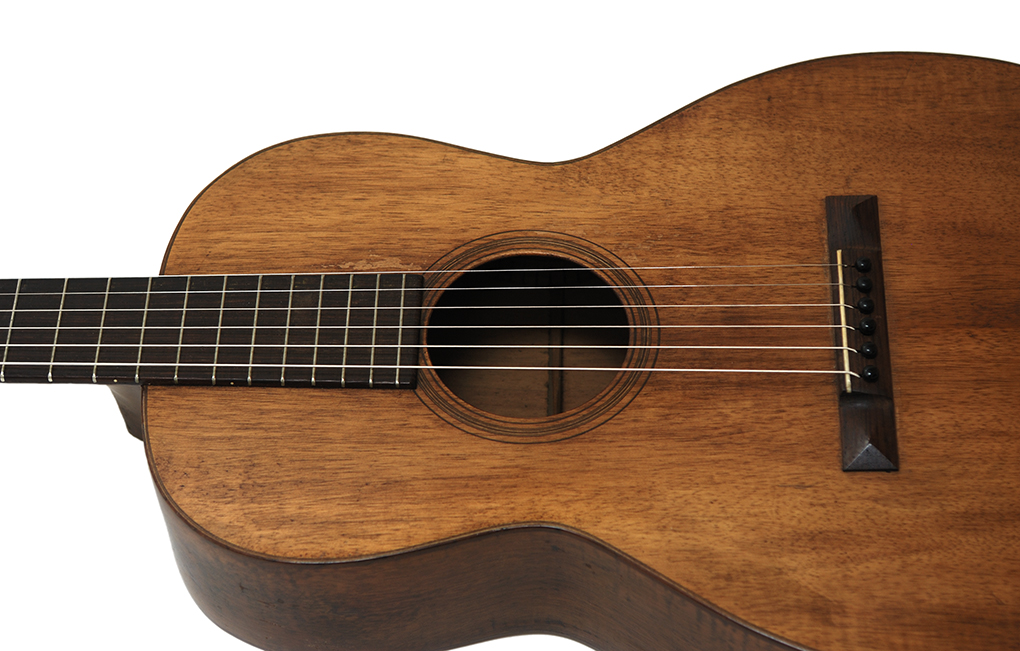 Those are all Martin guitars, and - yes, believe it or not - that's koa. Koa can be extremely plain. whm |
|
#24
|
|||
|
|||
|
That is my reaction as well. Doesn't look as much like mahogany to my eye. I have some koa ukes that aren't so different.
__________________
My YouTube Page: http://www.youtube.com/user/ukejon 2014 Pono N30 DC EIR/Spruce crossover 2009 Pono koa parlor (NAMM prototype) 2018 Maton EBG808TEC 2014 Hatcher Greta 13 fret cutaway in EIR/cedar 2017 Hatcher Josie fan fret mahogany 1973 Sigma GCR7 (OM model) rosewood and spruce 2014 Rainsong OM1000N2 ....and about 5 really nice tenor ukuleles at any given moment |
|
#25
|
|||
|
|||
|
These don't look like the wood in the ebay link, at least to me. Although I am surprised at how plain it looks, even more plain than the mahogany on my GS mini.
__________________
Taylor GS Mini 2013 Mahogany Taylor 150e 2014 Spruce Fender Stratocaster MiM w/Texas Specials 2008 |
|
#26
|
|||
|
|||
|
Quote:
Koa varies more than any other major tonewood I know. Here are some side by side shots from the same webpage that might give you a better idea of that range: 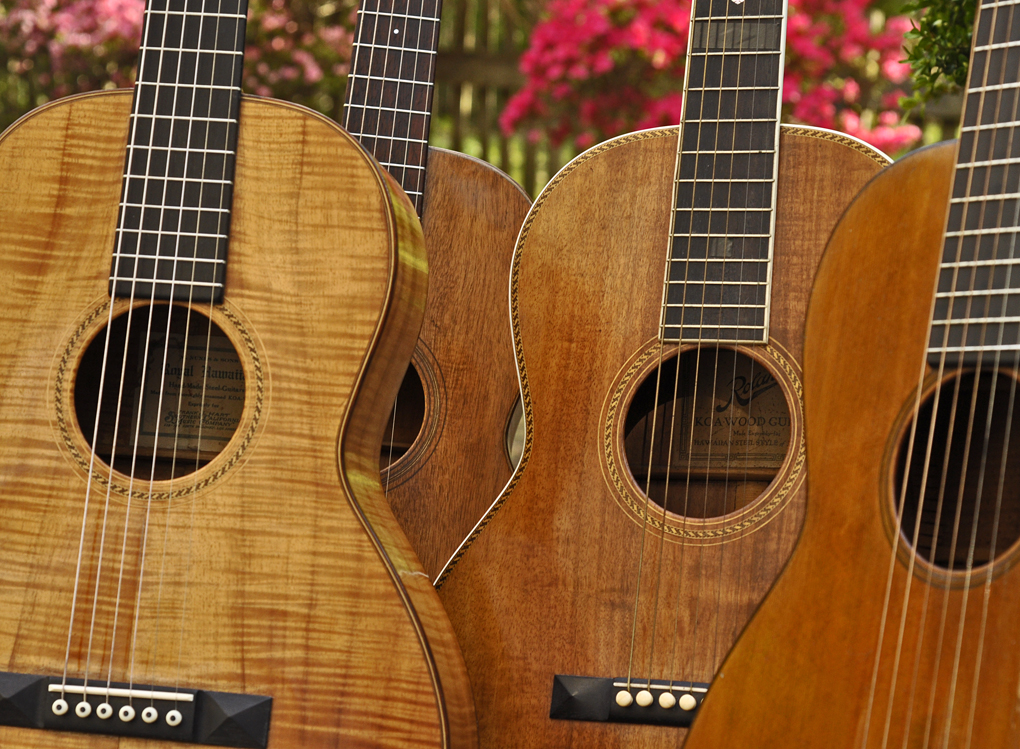 * 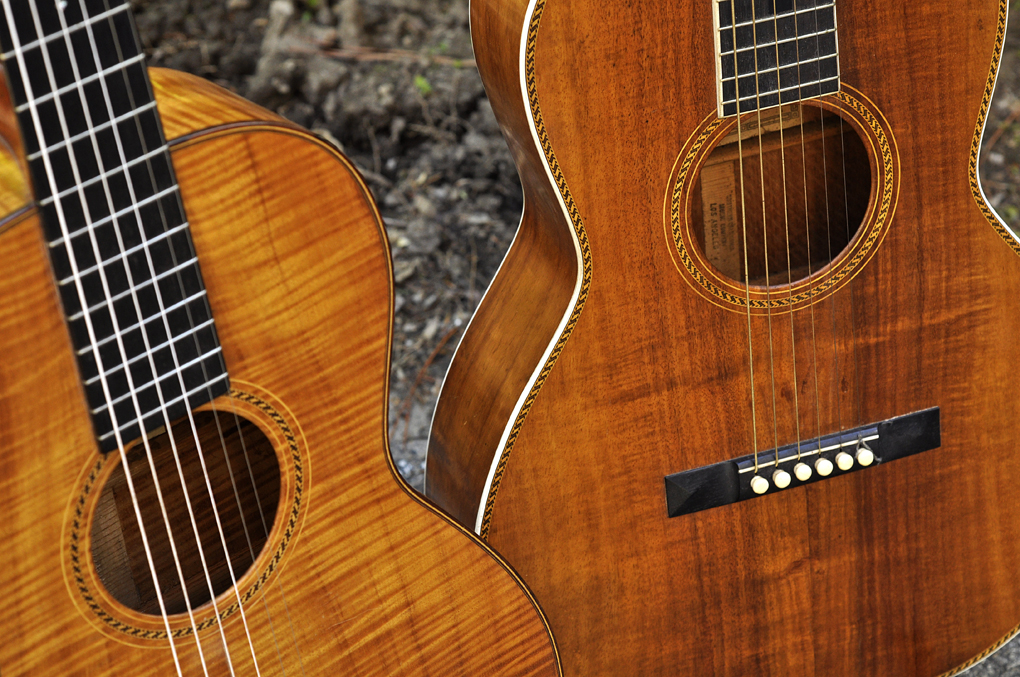 * The wood on the guitar in the eBay listing falls within the range of what koa can look like. Hopefully, if you look at all the pictures and follow all the links on this thread you can see that there is, in fact, a really wide spread of colors and grain patterns that koa can have. I've been deeply interested in koa ever since I heard an incredibly good-sounding mountain dulcimer made out of it at the Winfleld Festival in 1977 or 78. I've owned and commissioned a number of custom instruments built out of koa, plus I make a habit of picking up and playing every koa instrument I see in music stores. It's no exaggeration to say that I've handled and played hundreds of koa guitars over the decades. So please believe me when I tell you that koa can vary immensely, sometimes even within the same board. Wade Hampton Miller |
|
#27
|
|||
|
|||
|
I have to say that looks like lower grade koa to me. Truetone Guitars was known for their 'Hawaiian' guitars (square necks) back in the day, so it would make sense.
__________________
Larrivee L-10 Custom Larrivee DV-10K Larrivee L-03 Taylor 412K ('96) Yamaha LL16-12 (SOLD) PRS 'Studio' (SOLD) Rickenbacker 660-12 (SOLD) Fender USA Deluxe Strat Fender USA Roadhouse Strat Fender MIM/USA Partscaster Fender MIM Nashville Tele Kelsey Custom Hardtail Strat Fender MIM P-Bass |